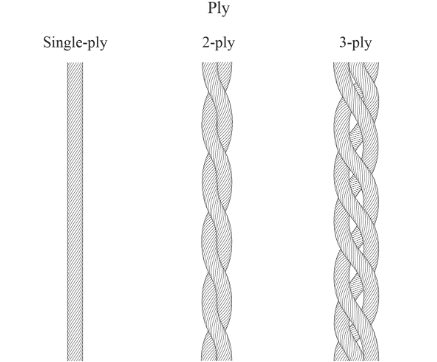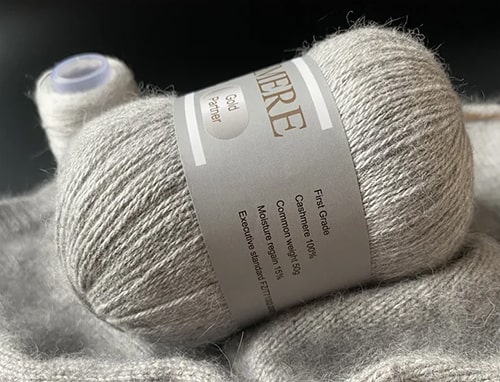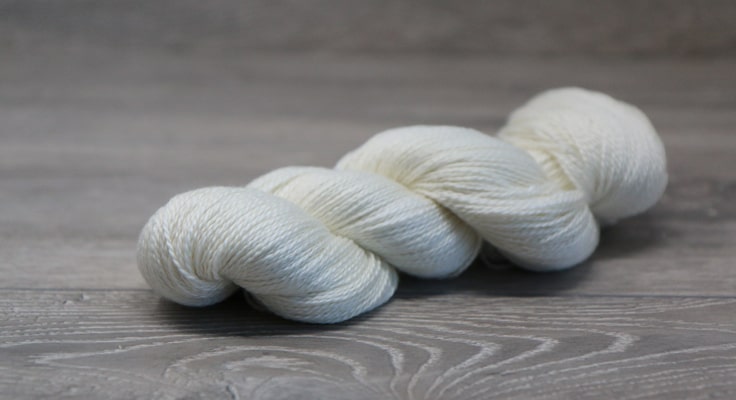Cashmere” a luxurious type of wool known for its softness, warmth, and durability, derives from cashmere goats living in high altitude areas. The term Ply in cashmere references the number of single strands, or threads twisted together to form the yarn used in manufacturing the product. Understanding the ply concept is essential to appreciating the nuanced variations in cashmere’s warmth, weight, and longevity.
A yarn’s ply doesn’t inherently signify the cashmere’s quality; it’s more closely associated with the garment’s thickness and warmth. Single-ply cashmere utilizes one strand of yarn, making it lighter and more delicate. Conversely, two-ply cashmere involves two strands twisted together, resulting in a denser, warmer, and more robust garment.
To elaborate, let’s consider this analogy: think of single-ply cashmere as a thin, single-layered sheet of paper. It’s light and flexible but can tear easily. However, if you glue two sheets together (equivalent to two-ply cashmere), the resulting ‘paper’ is thicker, tougher, and harder to tear. This analogy can extend to higher ply cashmere (3-ply, 4-ply, etc.), with the thickness and durability increasing with each added ply.
However, an important point to note is that ply isn’t a definitive indicator of quality. Quality is more determined by the length and diameter of the cashmere fiber. Longer, thinner fibers produce softer, higher quality cashmere that pills less. Conversely, shorter, thicker fibers can result in a less soft, more prone-to-pilling garment, regardless of its ply.
It’s also worth mentioning that an increase in ply can lead to a rise in the garment’s weight, making it potentially less comfortable or practical in certain environments. Furthermore, higher ply garments require more raw cashmere, which can drive up the cost.
From a data-driven perspective, the cashmere market is a multi-billion-dollar industry with a complex supply chain. Numerous factors influence the quality and price of the final product, including the health and breed of the goat, the climate and geography of the farming region, the skill and techniques employed in harvesting and spinning the wool, and the number of plies used in the yarn.
Despite the notion that more plies might suggest a better product, data doesn’t necessarily support this assumption. Customer reviews and product ratings don’t always favor higher-ply garments over single-ply ones. These consumer perceptions highlight that comfort, style, price, and individual needs often weigh as heavily as technical specifications in purchasing decisions.
So far, we learned that the term “ply” in cashmere provides essential information about a garment’s thickness, warmth, and durability. However, it’s only one of many factors that contribute to the final product’s quality. Understanding this, along with the complex supply chain factors and consumer preferences that influence the cashmere market, is key to making informed buying decisions. Therefore, while ply is important, it should not be the sole factor in determining your choice of cashmere product.
Difference between 1 Ply, 2 Ply, 3 Ply, and 4 Ply
1-Ply Cashmere
This is made from a single strand of cashmere yarn. It’s the lightest and most delicate type of cashmere, making it perfect for warmer seasons or for individuals who want a lighter garment. Despite being delicate, 1-ply cashmere still offers the luxurious softness associated with this material. However, it might not provide as much warmth as higher ply cashmere, and it’s more susceptible to pilling and wear over time.
2-Ply Cashmere
This uses two strands of yarn twisted together, resulting in a garment that’s more robust, warmer, and less likely to become damaged than 1-ply cashmere. It’s a popular choice for winter clothing due to its added warmth. It offers a good balance between lightness and durability, making it versatile across seasons.
3-Ply Cashmere
With three strands of yarn combined, 3-ply cashmere is even warmer and more durable. It’s substantial enough to create more structured garments, such as tailored sweaters and jackets. This ply’s added thickness and weight provide increased insulation, making it ideal for colder climates.
4-Ply Cashmere
This is the thickest commonly found cashmere, composed of four strands of yarn. It’s extremely warm, robust, and resistant to wear and tear. 4-ply cashmere is often used for heavy-duty winter clothing, such as thick sweaters and coats. Despite its thickness, it maintains the soft, luxurious feel synonymous with cashmere.

The ply number in cashmere is a factor that directly impacts the thickness, warmth, and durability of the final product. However, it’s also important to remember that the quality of cashmere is determined by other factors like the length and diameter of the fibers. So, higher ply doesn’t necessarily equate to higher quality. In fact, it might just mean a thicker, warmer garment which may or may not be what you’re looking for.
What ply of cashmere is best?

The quality of cashmere is not determined solely by its ply number. While the ply can influence the thickness and warmth of a cashmere garment, the real indicators of cashmere quality lie in the fiber length and diameter.
Cashmere fibers come from the soft undercoat of cashmere goats. The highest quality cashmere has long, thin fibers. Longer fibers mean fewer ends, which reduces the pilling often seen on the surface of cashmere products. Thinner fibers are softer, leading to a more comfortable, luxurious feel. Ideally, the cashmere fiber diameter should be under 19 microns, and the longer, the better.
In the context of ply, a higher ply cashmere tends to be warmer, more durable, and less prone to holes because it’s thicker. However, it also means a heavier and bulkier garment, which may not always be desirable, depending on your needs and the intended use.
For example, a 2-ply cashmere sweater might be a great balance of warmth, durability, and weight for many people, making it a common choice. A 4-ply or even higher cashmere might be suitable for extremely cold climates or for those who want the most robust garment.
On the other hand, a 1-ply cashmere garment could be perfect for someone seeking a lighter, more breathable fabric suitable for warmer climates or transitional seasons, despite it being more delicate.
Final Thoughts
The “highest quality” ply depends on your personal needs, preferences, and the specific conditions in which you plan to wear the garment. But remember, when assessing the quality of cashmere, the fiber length and diameter are more critical than the ply count.

